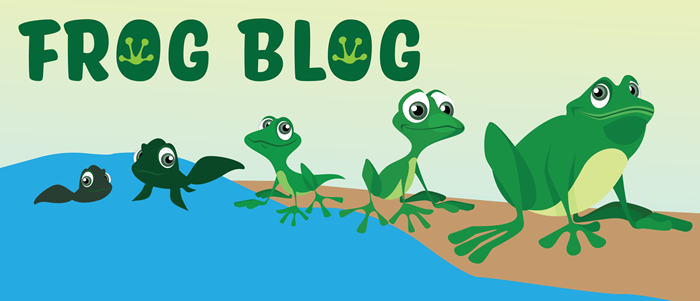
The Frog Blog 2020
Run by the Ginninderra Catchment group and sponsored by Icon Water, the Frogwatch program has given 120 classrooms across Canberra the opportunity to witness tadpoles transform into frogs.
The program which kicked off on the first day of term 4 for ACT schools, provides classrooms with everything students need to look after spotted grass frog tadpoles as they transform over 10 weeks. The kits also include detailed instructions and weekly updates with ideas for lessons and activities.
The program not only gives kids a fun learning experience and an understanding of amphibians, but an appreciation for the wider natural world. In this way students learn how to maintain and improve the health of water catchments and surrounding environments.
Canberra’s frog population has lost much of its diversity over the past 50 years. Many of our once common frog species in the ACT are now extinct due to environmental factors such as habitat loss or diseases.
One way to help is by encouraging and maintaining our local waterways and catchment systems. That is why programs like Frogwatch that teach students about maintaining ecosystem health are so important!
Week 4: The Life cycle of a Frog
When the frogs first arrive in the classrooms, they are not frogs at all, they are tadpoles! That is because a frog has an incredible life-cycle and goes through something called metamorphosis. Metamorphosis means changing from one form into another. Animals that experience this change look very different as babies than when they grow older.
Frogs go through several stages of life before they become adult frogs.
Stage 1: Egg
A frog begins life as a fertilised egg. A female frog lays a lot of eggs at one time, this is called frog Spawn.
Stage 2: Tadpole
A Tadpole hatches from an egg and looks more like a fish than a frog! Tadpoles do not have any legs. Instead, it has gills that allow it to breathe underwater. It only eats plants and algae from the water. A Tadpole grows for several weeks and will develop lungs and hind legs. Although the tadpole is starting to look more like a frog, it still has a very long tail.
Stage 3: Young Frog
A tadpole will grow two front legs. Its tail will slowly become shorter. That is because a tadpole can absorb the nutrients stored in its tail as food. It will be able to spend a short amount of time out of the water and on land.
Stage 4: Adult Frog
A tadpole has entirely transformed into a frog when their tail fully disappears. A frog will start to eat insects instead of plants from the water. The adult frogs will soon lay their eggs and more tadpoles will hatch so that the cycle can begin again
Week 3: What and How Frogs Eat?
- When tadpoles arrive in the classrooms, they are entirely vegetarian! A tadpole's diet consists mostly of algae and plants in the water. However, as tadpoles transform into a frog their diet transforms too.
- A frog is a carnivore! A frog’s diet consists mainly of insects, small animals like earthworms, and spiders. Frogs hunt for food mostly at night and catch their prey using their long sticky tongues. When catching an insect, a frog will flip out its tongue rapidly get the insect and retract its tongue. Frogs are not able to chew their food as they only have teeth in the upper jaw. Instead, they swallow their prey in one piece!
Week 2: How Frogs Drink
Frogs don’t drink water the way other animals do! Instead, they absorb water directly through their skin in an area known as the ‘drinking patch’ located on their belly and the underside of their thighs. This means that whatever is in the water is unfiltered and passes directly into their body. That’s why pollution in waterways directly impacts frog health.
There are over 6,300 species of frogs in the world. However, nearly half of these species are in decline. You can help frogs thrive and keep our waterways clean by:
- Watching what you throw away: Remember to watch what you throw away to keep frog habitats trash-free. The water that ends up in storm drains often ends up in frog habitats polluting waterways.
- Keeping non-native plants and animals out of frog habitats: Non- native plants and animals are the ones that come from outside of your local area. These species can disrupt entire habitats and can spread disease.
- Reducing chemical use: Chemicals or pesticides that we use in our gardens can infiltrate our waterways. This can be bad for frogs and humans!
Protecting a frog’s environment is essential to their health.
Week 1: How do frogs breathe?
Frogs are amphibians and have two very distinct life stages. When Tadpoles arrive in the classroom, they have just hatched and will live entirely in the water, breathing through their gills. As the tadpoles continue to develop and grow legs, they will need access to both water and land. This is because the development of legs is a strong indicator that the tadpoles have grown lungs and will start to breathe in air in order to survive.
To find out more about how frogs breathe, and other interesting frog facts, check out this video of Frogwatch expert Anke Maria:
